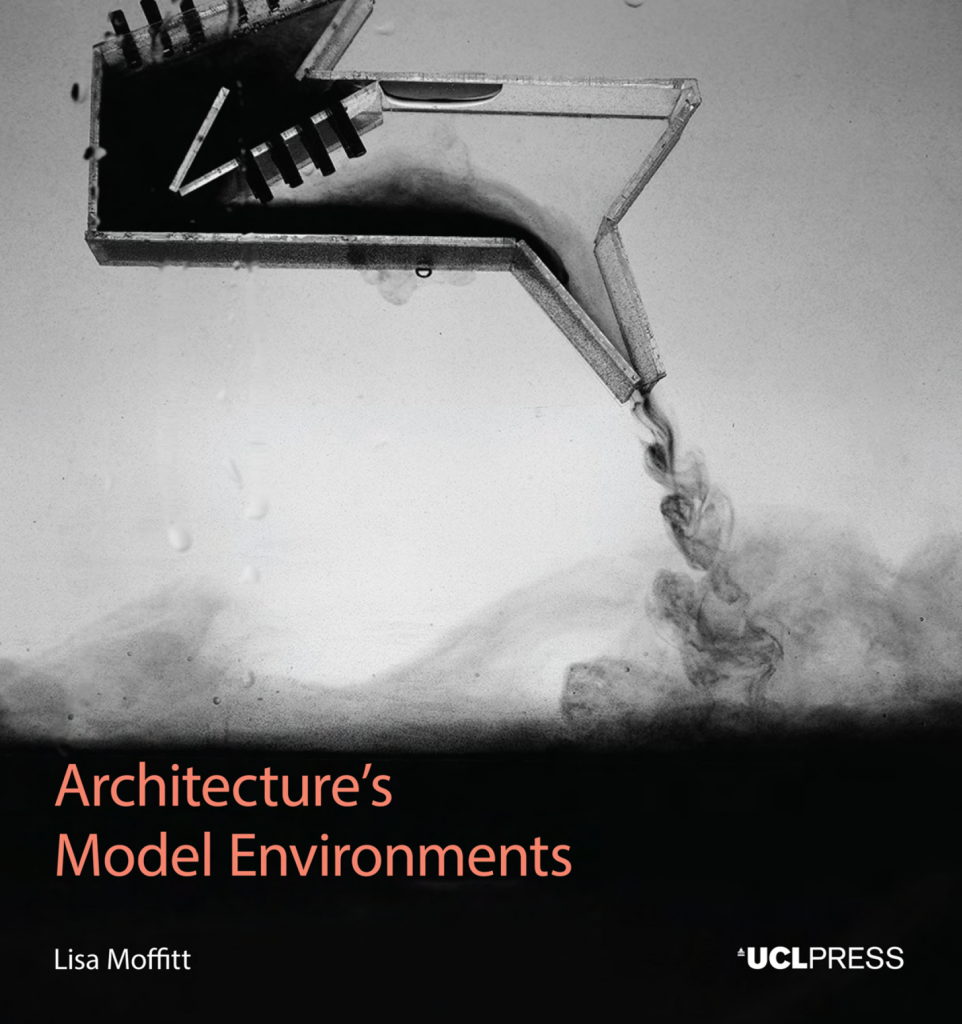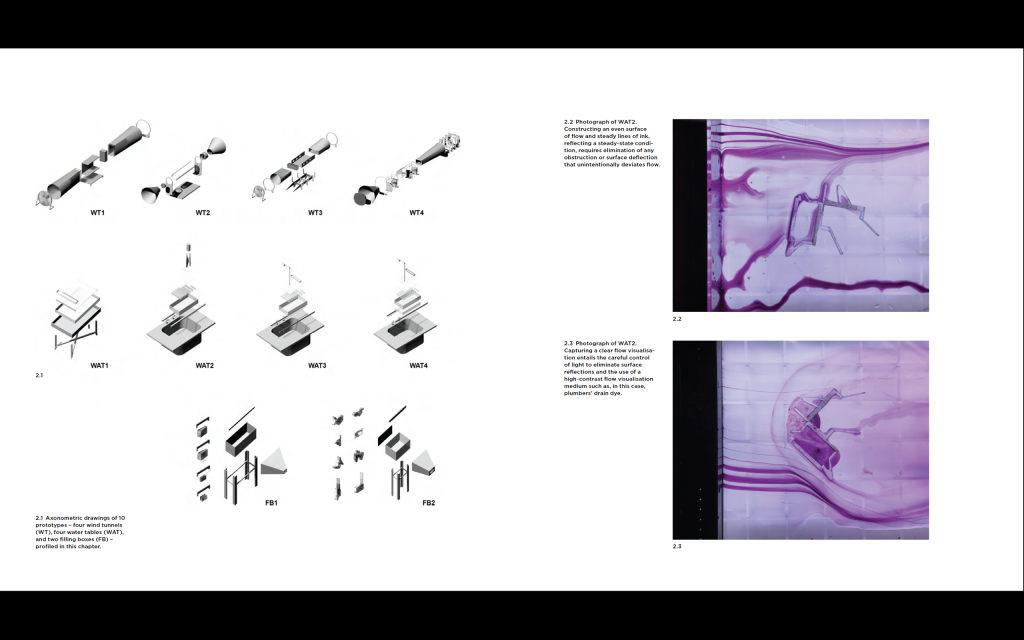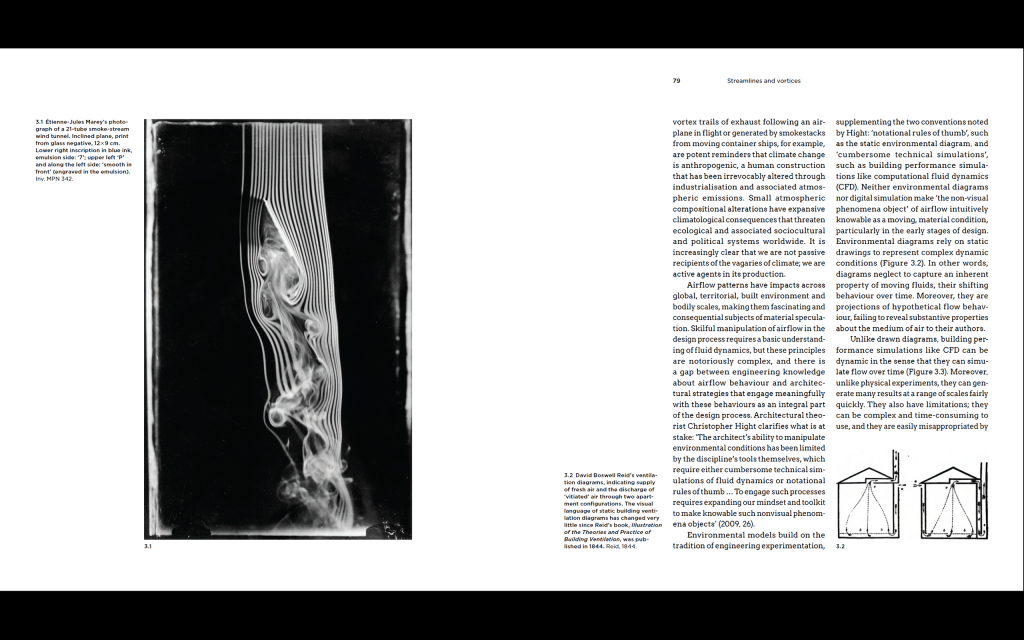Assoc. Prof. Lisa Moffitt’s new book includes student work from Tank Worlds studios
March 22, 2023
Associate Professor Lisa Moffitt has produced a new book, Architecture’s Model Environments, that builds on her doctoral research into environmental models and includes student work from her Tank Worlds studios at the Azrieli School of Architecture & Urbanism.
The 246-page book was published in February 2023 by UCL Press as part of its Design Research in Architecture series. It is available as a free open access pdf here.
“In the widest sense, my research is driven by a compulsion to make things like installations or speculative design projects or buildings or paintings or, in this case, models/devices that fundamentally question how buildings mediate their environmental surroundings,” says Dr. Moffitt.
The sixth and final chapter, titled Model Environments, features images of work by several Carleton University architecture students enrolled in her Tank Worlds studios from 2020 to 2022.
They are Charles-Étienne Déry, Charlotte Egan, Hailey McGuire, Damiano Perrella, Eilidh Sutherland, Joel Tremblay, and Sarah Van Alstyne.

“All our lives and perspectives have been significantly challenged over the past two years, and the final chapter tries to grapple with the relevance of environmental models in light of these profound changes,” says Moffit. “I do this by addressing the questions: What are the targets of our environmental models now in light of the threats of climate breakdown, its associated injustices, and the realities of aerosol viral transmission driving the COVID-19 pandemic?”
The book is an extension of the PhD research that she completed in 2019 at the University of Edinburgh while a full-time academic there. She joined Carleton University in 2020 and wrote the book over the 2021-2022 academic year.


“I initiated the PhD with an interest in the role that engineering experimentation devices like wind tunnels and water tables might play as generative design tools,” Moffitt recalls.
“My hunch was that they might prove a useful, more intuitive supplement to the static environmental diagram or more complex digital simulation for exploring fluid dynamics and thermodynamic principles governing airflow and thermal exchange in buildings.”
She called these devices environmental models for lack of a more established term in architecture.
“I intended to build these devices and then spend a few years using them to develop design projects and teaching curriculum,” she says.

“What I found instead was that they were incredibly complicated to make, so most of the prototypes failed, prompting development of the next prototype, which inevitably failed.
“But in the process of these many so-called failures, I came to understand that the value of these devices was in the lessons they yielded across many scales, from the full-scale artifact to the scale architectural model on the testing bed to the ambiguous scales suggested by the addition of air and water as constituent materials.”
Written research took place in parallel to physical prototyping. Moffitt explored three case study environmental models and their roles in establishing the origins of contemporary concerns tied to airflow visualization, building climate control strategies, and notions of thermal asymmetry that are prevalent today in both architectural and thermal comfort discourse.
“I am grateful to the students at Carleton who enrolled in the Tank Worlds studios and seminar for expanding my understanding of environmental models as devices for telling stories,” she writes in the book’s acknowledgments.


About Architecture’s Model Environments
Seen through the distilling lens of the architectural model, Architecture’s Model Environments is a novel and far-reaching exploration of the many dialogues buildings have with their environmental surroundings. Expanding on histories of building technology, the book sheds new light on how physical models conventionally understood as engineering experimentation devices enable architectural design speculation.
The book begins with a catalogue of ten original model prototypes – of wind tunnels, water tables, and filling boxes – and is the first of its kind to establish an architectural approach to fabricating such environmental models.
Subsequent chapters feature three precedent models that have been largely overlooked within the wider oeuvres of their authors: French polymath Étienne-Jules Marey’s 1900-2 wind tunnels, Hungarian-American architects Victor and Aladár Olgyay’s 1955-63 thermoheliodon, and Scottish chemist and building ventilation expert David Boswell ‘The Ventilator’ Reid’s 1844 test tube convection experiments.
Moving between historic moments and the present day, between case studies and original prototypes, the book reveals the potent ability for models, as both physical artifacts and mental ideals, to reflect prevailing cultural views about the world and to even reshape those views. Fundamentally, Architecture’s Model Environments illustrates how environmental models reveal design insights across scales from the seam (that leaks) to the body (that feels) to the building (that mediates) to the world (that immerses).